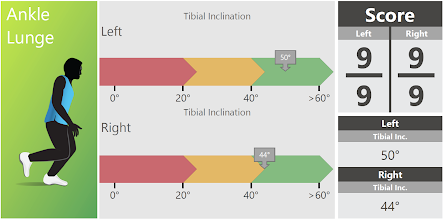Ankle Dorsiflexion: Why is Ankle Dorsiflexion a metric on the AMI?

Ankle Dorsiflexion and the AMI Our sales team is regularly asked: why is ankle dorsiflexion in the AMI ? To this, dorsaVi reply: why would you not look at the ankle? Our AMI uses a criterion-based approach to measure the foot and ankle, the knee and the hip. The reason we prioritize looking at ankle DF is because we recognize that when we look at an athlete’s lower extremities, we are looking at a chain. The ankle is a key component of that the chain and if you remove that link, then it will be compensated for elsewhere (typically in the knee or hip). Why is the ankle important? If an athlete lacks dorsiflexion, for example on the left side, and then they perform a bilateral squat, they will shift their weight to the right side in order to get down to the required depth. When the athlete shifts to the right during their squat, the ankle dorsiflexion on the right leg is going to be increased and the dorsiflexion on the left side will be less. If the athlete has
